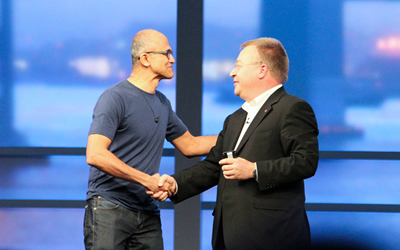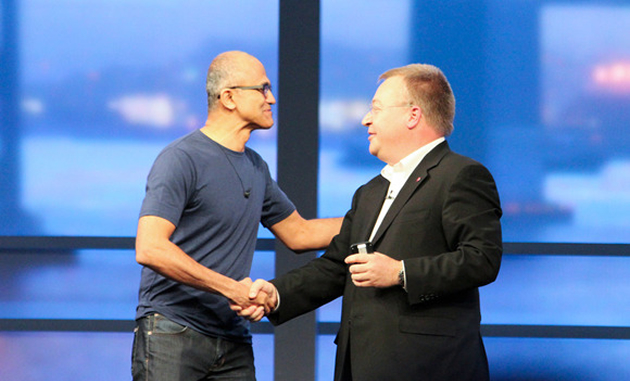RIP Nokia. Today marked the end of Nokia the phone company — at least in branding — and the birth of Microsoft-branded mobile phones. Microsoft has completed its US$7.5 billion acquisition of Nokia’s Devices and Services business, after an eight-month approval process. The closing price is slightly more than the original bid of $7.2 billion, or €5.44 billion, announced last September.
 Microsoft said it isn’t ready to rename its new Windows devices, so for now it will continue to sell Lumia branded phones and tablets. Most of Nokia’s phone factories will manufacture the new Microsoft phones, with a strong focus on developing markets. Microsoft says it will honor all existing warranties for existing Nokia devices.
Microsoft said it isn’t ready to rename its new Windows devices, so for now it will continue to sell Lumia branded phones and tablets. Most of Nokia’s phone factories will manufacture the new Microsoft phones, with a strong focus on developing markets. Microsoft says it will honor all existing warranties for existing Nokia devices.
Nokia’s outgoing CEO Stephen Elop (pictured above, on the right), who worked for Microsoft before going to Nokia, will head Microsoft Devices Group, which includes the new Microsoft Mobile Oy in Finland. He’ll report directly to Microsoft’s new CEO Satya Nadella (also pictured), who took over after Steve Ballmer retired in February. As part of the deal, Elop will also receive a $25 million bonus.
Microsoft also picks up about 25,000 former Nokia employees at 130 sites in 50 countries. Nokia’s non-devices divisions will continue to operate as Nokia Siemens Networks; Nokia HERE, which offers location-based services (which Microsoft will continue to license); and Nokia Advanced Technologies, which is focused on advanced technology development and licensing.
If you have questions about the transfer or future plans for Microsoft, Stephen Elop will be online to possibly answer them in the Nokia Conversations blog this coming Monday, April 28, at 1pm GMT (9am Eastern, 6am Pacific). Questions and answers will then be posted online in case you miss it.
Microsoft announces financials
Microsoft yesterday also announced results for its third quarter, ending March 31, 2014. The company saw relatively flat revenue of $20.40 billion for the quarter, and a drop in profits. Net income was $5.66 billion, or $0.68 per share, down from net income of $6.1 billion, or $0.72 per share a year ago.
One bright note was revenue from the company’s devices and consumer products, which grew by 12 percent to $8.30 billion. Commercial revenue grew 7% to $12.23 billion. Some highlights were a 4 percent revenue increase in Windows OS sales to hardware vendors, and a 50 percent revenue increase in Surface tablet revenue to $500 million.
Office 365 Home, the subscription-based version of Office for consumers, ended the quarter with 4.4 million subscribers, almost one million more than in the previous quarter. Office 365 sales took off after Microsoft announced updates to the suite this month, along with availability of Office for iPad.





